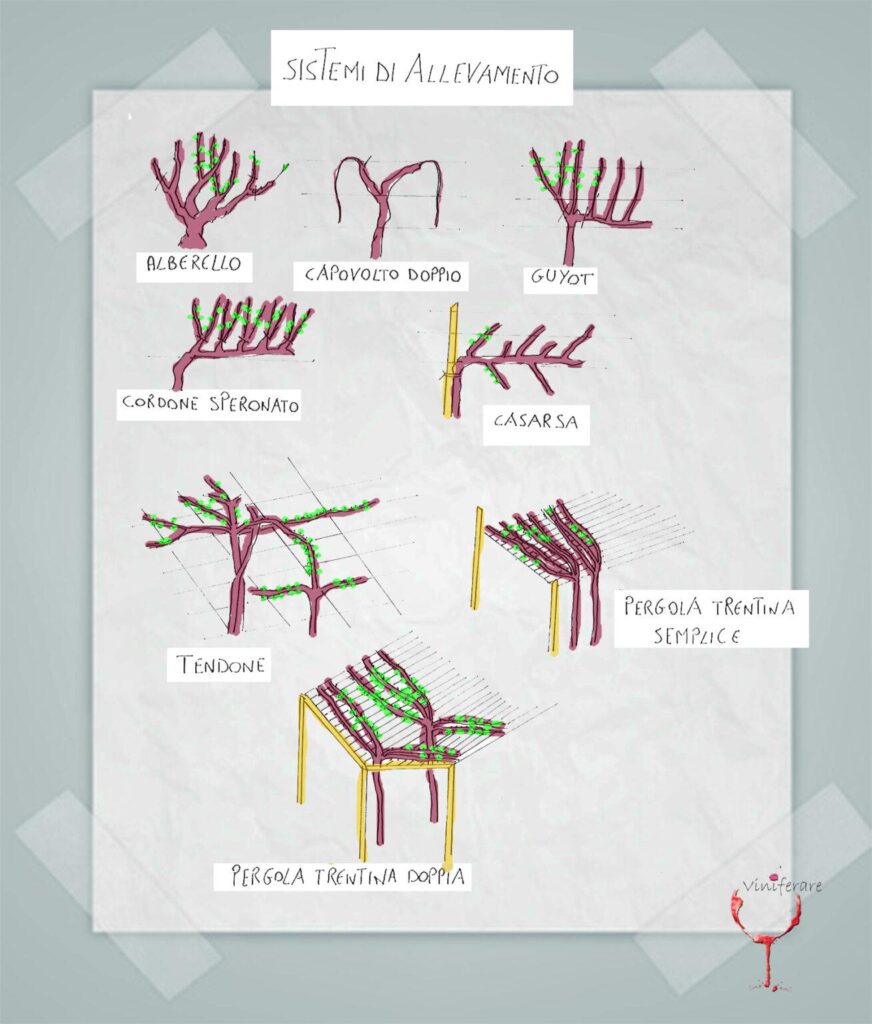
There are different types of vine training, which are pruning schemes and row geometries adopted by the winegrower to reduce and condition the vegetative growth of the plant in favor of the production yield and grape quality. Some of the main types of vine training used in Italy are:
• Sapling: The vine has free vegetation (absence of stakes), pruning is generally short;
• Pergola: The vine support structure is placed transversally between the rows and there is no permanent cord (i.e. the branch lateral to the stock). The Pergola can be simple or double, depending on whether the fruiting heads are in an ascending or horizontal position. Pruning is mixed;
• Tent: The support structure is placed both along the row and across the row, there is no permanent cordon and the fruiting heads develop horizontally. Also in this case the pruning is mixed;
• Bellussera: The brace has ascending arms, along which the permanent cords develop. The fruiting heads are in a descending position, the pruning is mixed and the vegetation is partly free and partly obligatory;
• Espalier: also called “counter-espalier”, it has the characteristic of having the support structure placed horizontally and along the row. There are various pruning systems, including simple or double Guyot and spurred cordon.
Each type of vine training has its benefits and disadvantages, depending on the environmental conditions, the characteristics of the vine, and the production and quality objectives of the winegrower. In general, modern forms of cultivation (such as espalier) tend to have higher productivity, better sun exposure, less sensitivity to fungal diseases, and greater ease of mechanization than traditional forms (such as small trees or pergolas). However, the latter can have advantages in terms of adaptation to difficult terrain, resistance to drought, conservation of biodiversity, and valorisation of the territory,
